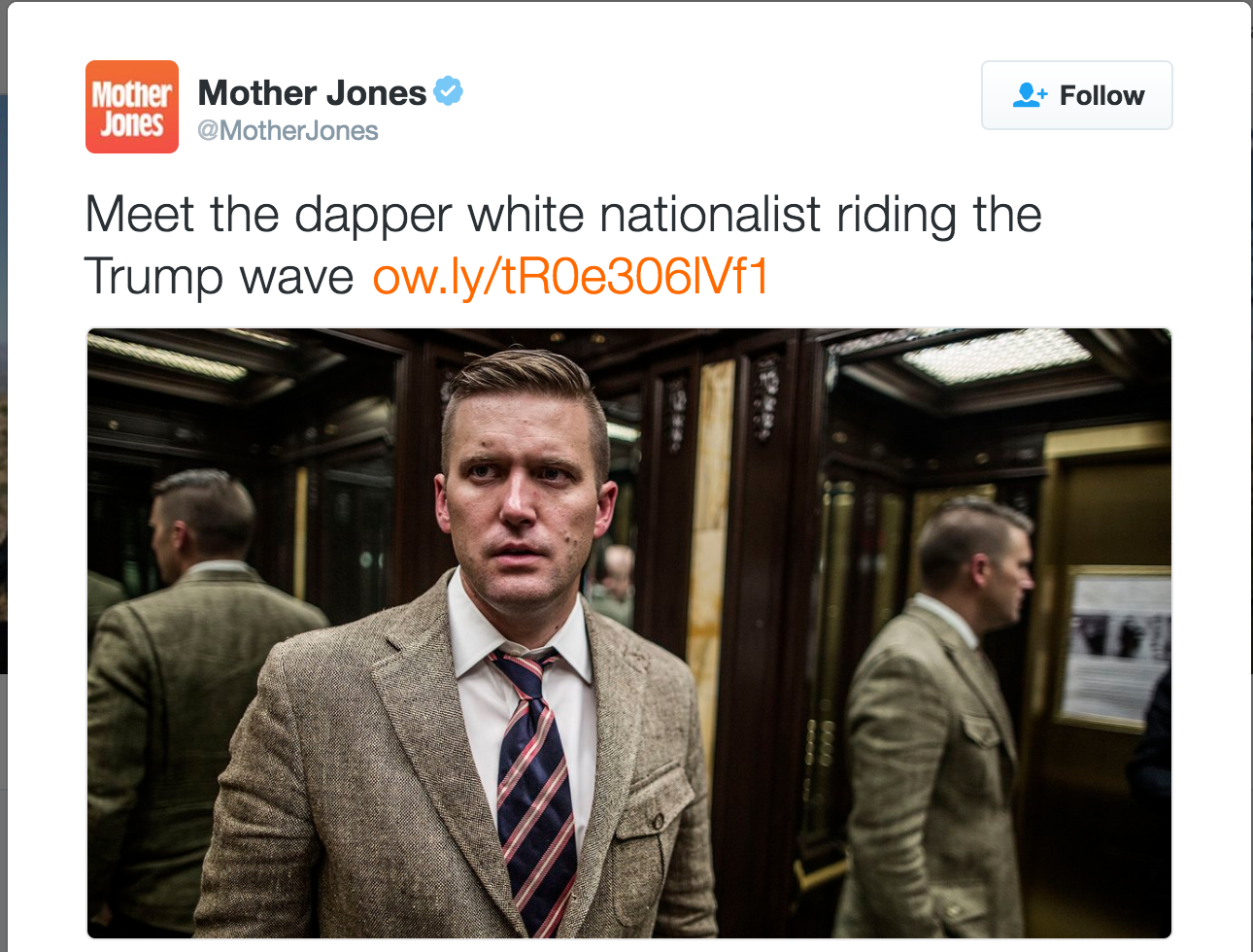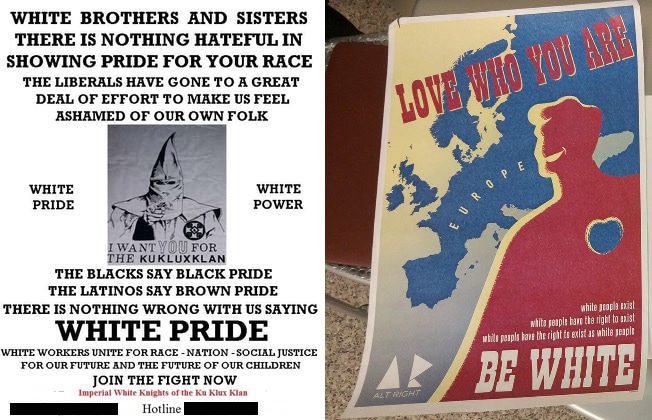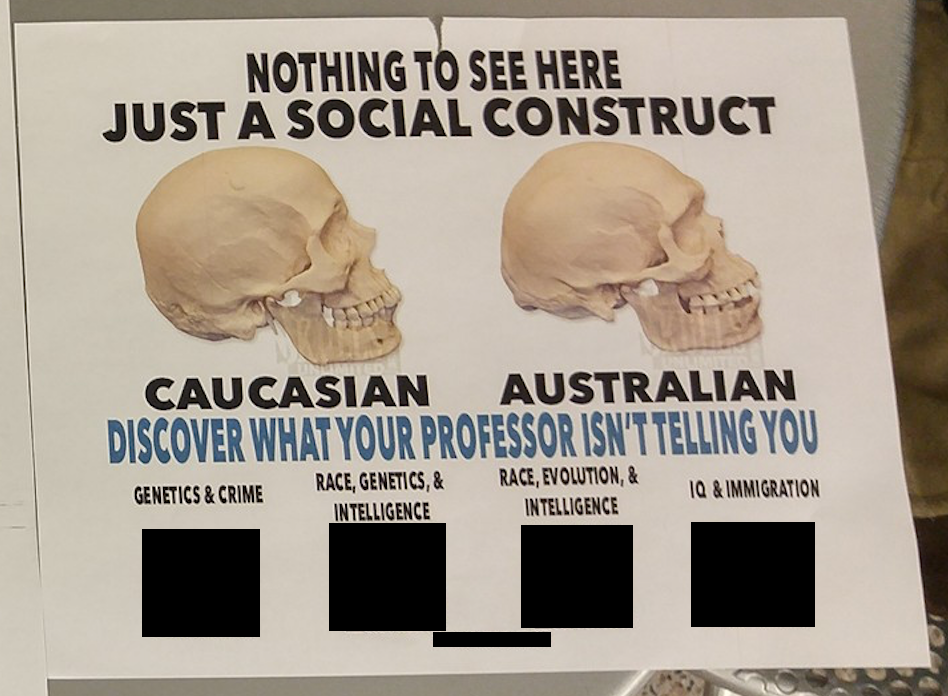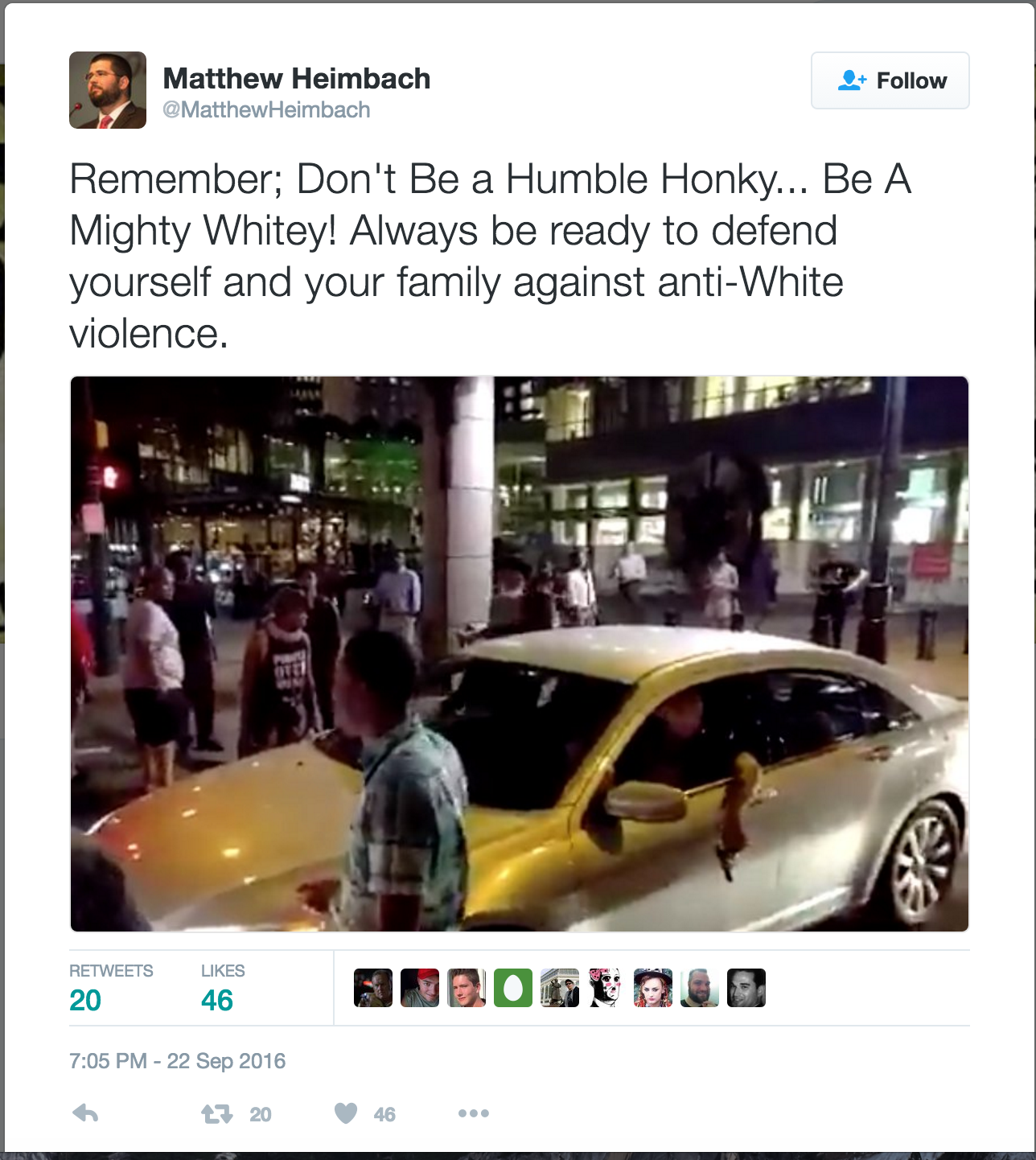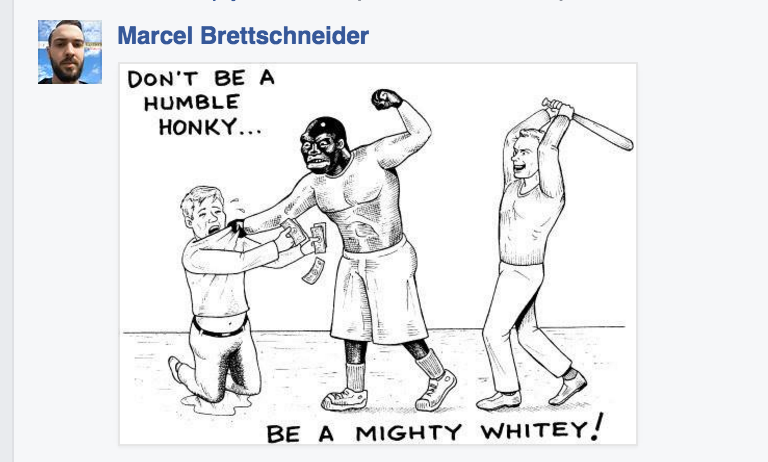The Emerging Racists: The Challenge of Covering the Radical Right
Reporting on organized white supremacy comes with a myriad of challenges. We confront those challenges on Hatewatch daily with varying degrees of frustration and success. And we have watched with sympathy –– and, yes, at times frustration –– as reporters and editors have grappled with white supremacy rebranded as the “Alt-Right.”
Recently, John Daniszewski, vice president for Standards at the Associated Press, offered guidance regarding that rebrand and the accompanying litany of terms and definitions that follow in its slip-stream: “Let’s tackle them.”
We couldn’t agree more.
But while reporters strive to capture accurately the meaning of Alt-Right in concept, reporters must capture its subjects in person with a level of care and attention to a history that long predates the rebranding.
Such care has been lacking.
Even when outlets present more substantive moments of defining terms such as “ethno-nationalist” and “white nationalist,” they often display a willingness to meet Alt-Right leaders on their own terms. The impact of such reporting is normalizing.
Photographing these leaders, for example, against the backdrops of their families and neighborhoods or reclining in hotel rooms is, to indulge a cliché, a million miles from what our democracy and our society would resemble for millions of other Americans if individuals like Richard Spencer, widely profiled since the election, held political or civic power.
Such editorial choices reflect just how far some are from reckoning with the history of organized white supremacy, its canon of propaganda and the brutality both have inspired. Simply defining these individuals as white nationalists who target ethnic and social groups is equally distant from capturing them and their work as descendants of organized white supremacy and the viciousness with which they have pursued their campaigns.
Consider eugenicist Harry H. Laughlin and the tens-of-thousands of victims who suffered his programs of forced sterilization, both here and in Nazi Germany. Think of Tom Metzger and the type of racial violence he has propagandized and even been found liable for inspiring. It is not enough to define the Alt-Right accurately when the structural white supremacy its leaders and figureheads are fighting to preserve has been pervasive, brutally so, in the lives of so many for so long. These leaders must be viewed against the backdrop of organized white supremacy and the concrete images of destructive hate it has produced.
Reporters must be more mindful of those afflicted by ideas like Laughlin’s than they are of Richard Spencer’s carefully curated appearance and persona, what he is having for dinner and what wine he choses to accompany. We must all work harder to cast him and others like him not just against this moment in politics, but against the entire history of American-branded white supremacy.
Let’s ponder some examples that have been published since the election.
The progressive stalwart Mother Jones, apparently perceiving a misstep in promoting their reporting on Spencer, appears to have deleted a tweet that led to their recent profile of him.
In a moment of media consumption where data scientists have proven only 40 percent of Twitter users click-thru to the actual articles they share, these images and headlines matter. The actual headline of that piece is “MEET THE WHITE NATIONALIST TRYING TO RIDE THE TRUMP TRAIN TO LASTING POWER,” which is strong. But the piece displays some problematic authorial and editorial choices.
The article begins:
“Richard Spencer uses chopsticks to deftly pluck slivers of togarashi-crusted ahi from a rectangular plate. He is sitting in the Continental-style lounge of the Firebrand Hotel, near his home in the upscale resort town of Whitefish, Montana, discussing a subject not typically broached in polite company. ‘Race is something between a breed and an actual species,’ he says, likening the differences between whites and people of color to those between golden retrievers and basset hounds.
We are well into our third round of Arrogant Frog, a merlot that Spencer chose because its name reminds him of Pepe, the cartoon frog commandeered as a mascot by the "alt-right" movement that has been thrust from the shadows by Donald Trump's presidential campaign. Spencer says Pepe could also be seen as the reincarnation of an ancient Egyptian frog deity, Kek: "He is basically using the alt-right to unleash chaos and change the world," he says, looking slightly annoyed when I crack a smile. "You might say, 'Wow,' but this is literally how religions arise."
If Pepe is the alt-right's god, then Spencer is its self-styled prophet.”
Spencer is not Pepe’s prophet; he’s Laughlin’s ideological fail-son.
Several weeks after publishing the profile, Mother Jones updated the piece with an acknowledgement of Spencer's "victory" speech in Washington, D.C., during which Spencer described America as a "white country" and proclaimed, "Hail Trump, hail our people, hail victory!" But missing in that update is an acknowledgment that Spencer is a eugenicist, a believer in racial-Darwinism as envisioned by Laughlin – and, yes, Adolf Hitler – and also advocated for more recently by hate group leaders like John Tanton, founder of the Federation for American Immigration Reform and the Center for Immigration Studies.
In a photograph accompanying the Mother Jones profile, Spencer is pictured in a suit against a backdrop of an elevator’s interior, adorned with polished mirrors and brass and deep stained wood. The effect is that of a funhouse mirror –– the history of white supremacy vanishes in the stylized pictures and beautifully rendered descriptions.
Indeed, failing to see the Alt-Right for what it is truly is risky.
Alt-Right flyers associated with Spencer’s work are being hung in the hallways of college campuses nationwide, where white supremacists are working to infect the discussion. Placing the propaganda of the so-called Alt-Right alongside that of the Ku Klux Klan, the oldest body of terrorism afflicting this country, one more notices the “prophet’s” wine-stained teeth rather than the shape of his plate.
The flyer below echoes the pseudosciences of eugenics and phrenology not “typically broached in polite company."
And lastly, consider Lauren M. Fox’s piece on Spencer at Salon: “The Hatemonger Next Door,” which was published in 2013, long before Trump’s candidacy.
“We are undergoing a sad process of degeneration,” Spencer said, coming back to minority births in the U.S. “We will need to reverse it using the state and the government. You incentivize people with higher intelligence, you incentivize people who are healthy to have children. And it sounds terrible and nasty, but there would be a great use of contraception.’”
Spencer didn’t mean the government should encourage people to use birth control pills and condoms. He was advocating for some type of government-forced sterilization.
‘They could still enjoy sex. You are not ruining their life,” Spencer said. But even Fox admitted, as Spencer would later delight on NPI’s website, that, she “was alarmed by the number of times I had found myself nodding along with him.”
In a moment that at least one other outlet has pointed out, Spencer would later applaud this piece on the websites of NPI and Radix as an example of how he and others might deceive reporters, even when reporters are attempting to construct pieces critical of him and his beliefs.
Let that warning stand.
In its piece, “’There’s nothing wrong with being white.’ Trump’s win brings ‘white pride’ out of the shadows,” the Los Angeles Times sought to find out how widespread Spencer’s bigotry was by comparing some of his sanitized opinions to those of two other white voters.
Though it is important for reporters to take the temperatures of Americans during moments like this election and others, the piece risks normalizing Spencer’s views by equivocally comparing them to a small sampling of white voters. Furthermore, the piece’s author evidences Spencer’s views on topics beyond the election with two partial quotations, five words total.
And though the piece doesn’t focus on Spencer specifically, it is topped with the picture below.
After acknowledging that hundreds of “hate incidents” have occurred after the election, the author notes, “Protesters have blocked streets in dozens of cities over a vote they see as affirming racism and xenophobia.” Instead of stating that Trump’s campaign and election have affirmed and emboldened myriad bigotries, the author moves fact into the subjective territory of those protestors’ motivations and views.
In describing whites emboldened by Trump’s campaign and election, the piece underscores the need for the very paradigm shift argued herein whenever reporters find themselves covering white supremacy.
After all, Spencer does not hold beliefs rooted vaguely in racial anxieties or “pride,” and he did not find voice for them in the Trump campaign. By creating a journal and an organization that uphold white supremacist thinkers and theorists, he is placing himself in their canon and lineage.
Describing him accurately requires no leap from objectivity. We must call white supremacy what it is and display its present day alongside its past. In doing so, we can avoid casting Spencer as a metonym: a cultured image standing in for organized white supremacy, one whose image drains out the terror and hate that his movement embodies. In covering the views of Americans alongside those of white supremacists, our stories should focus on why these beliefs exist against factual backdrops that challenge their rationality, particularly in a country where for so many facing structural racism is an everyday truth.
Tying this all together, let’s consider another so-called “Alt-Right” leader, Matthew Heimbach, who has received far less media attention than Spencer as of late. Heimbach did appear front-and-center, though, in a piece The New York Times published this past weekend, “An Alt-Right Makeover Shrouds the Swastikas.”
Beyond the title, the piece displays a sincere attempt to correct the wrongs of previous coverage. But a more accurate depiction is not a picture of Heimbach at home, child in arms, but those that he and his followers post on social media.
Here, for example, is a tweet that Heimbach seems to have since deleted from Twitter.
That tweet was cross-posted to his Facebook account, where it has also vanished. Before it did, though, one of his “friends” replied by posting this cartoon:
That cartoon, and those like it, recalls the images that filled Metzger’s “zines” promoting his his group White Aryan Resistance through the 1980s and early 1990s, and even later on his website.
Resulting from a court case that spanned 1988-94, Metzger was forced to pay damages to the family of Mulugeta Seraw, an Ethopian immigrant who was beaten to death by racist skinheads who had left a gathering earlier that day in Portland, Ore., where one of Metzger’s recruiters had implored them to act as, to borrow from the cartoon above, “Mighty Whiteys” and not “Humble Honkeys.”
This is where the history of white supremacy – those cartoons, flyers and quotes from Spencer earlier in this piece – intersect and instruct us on its consequences. It is that intersection that ought to comprise the background against which Spencer, Heimbach, and others must be seen. The deep stained wood and brass handled interiors of hotel elevators are deceiving.
It seems some journalists are struggling to balance the realities of calling racism by its true name with their own loyalty to objectivity –– no matter how they subjectively define it.
Daniszewski cautions journalists to be specific and deliberate when writing about the Alt-Right. “Avoid using the term generically and without definition, however, because it is not well known and the term may exist primarily as a public-relations device to make its supporters’ actual beliefs less clear and more acceptable to a broader audience," Daniszewski wrote. "In the past we have called such beliefs racist, neo-Nazi or white supremacist."
And here’s a tweet from Evan Osnos, a staff writer at the New Yorker, dated a week prior to Daniszewski's piece. Here’s one from Jamelle Bouie of Slate and CBS News.
And consider this headline from InsideHigherEd.com, published on 11/28/2016: “White Power Leader's New Target: Colleges.”
A deeper criticism is needed. Americans need reporters to contextualize Spencer not through his carefully crafted image but alongside his progenitors and their work, the Harry Laughlin’s and others who have wrought unending pain on hundreds of thousands of those who comprise the groups that Spencer and his ilk are, as Daniszewski notes, seeking to deny rights. And, as we would argue, much worse.
Heimbach and Spencer must be understood alongside Tom Metzger and his “Mighty Whiteys” and, therefore, before the destroyed bodies of victims like Seraw, who in death reflect a record of the most criminal and serial consequence that can be described when one engages with the reality of organized white supremacy in the United States.

